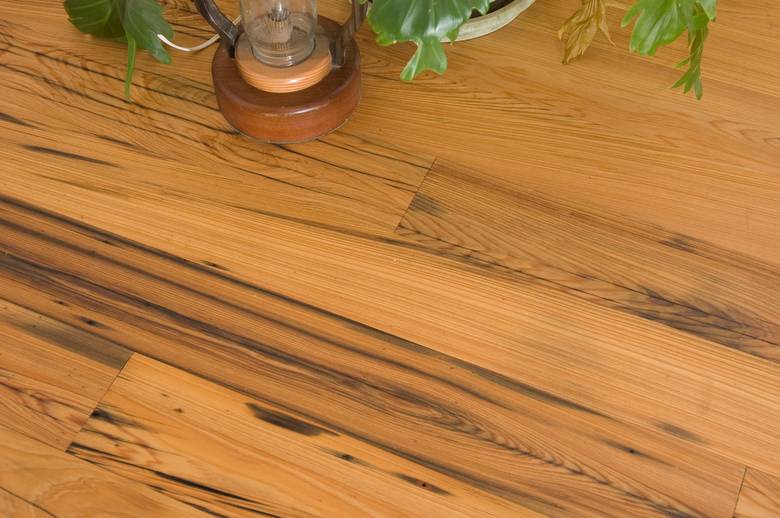Specific Width Cypress Picklewood Smooth T&G Flooring
Specific Width Cypress Picklewood Smooth T&G Flooring
Specification Sheet #4011 - Cypress Picklewood T&G Flooring
Request Quote
Height
Width
Length
Quantity
0.72"
3-6.5"
Rand 2-8'
min: 250 sf
Related Productline Pages
Picklewood Cypress T&G Flooring
Specification Sheet #4011 - Cypress Picklewood T&G Flooring
Species
Primarily Cypress
Source
Deconstructed Pickle Vats from various projects in the United States and Canada. Picklewood flooring is produced from 6/4" staves from deconstructed pickle vats. Picklewood bottoms flooring is produced from the bottoms and 2"+ staves of deconstructed pickle vats.
Flooring Type
Solid Wood, Unfinished
Profile
Tongue and Groove (T&G)
Knots
Picklewood material is virtually clear. Occasional pin knots are allowed
Holes
Occasional small nail holes; no visible bolt holes (boards were often assembled with wooden dowels so there can be some partial dowel holes on the edge of the reverse face)
Checking/Cracks
Unlimited as long as board is sound; end cracks to extend no more than 6" into board; some boards have dark checking, making them ideal for a distressed flooring product
Grain Pattern
Tight grain; primarily flat or mixed grain, vertical grain may be available from time to time.
Standard Dimensions
a) Thickness: 3/4"; b) Width: Varies, typical Picklewood flooring widths can be expected to be 2" to 6"; wider Picklewood flooring may be available at any given time; and c) Length: 2 to 8' with no more than 5% of total footage shorter than 4'
Textures Available
Smooth, Wire-Brush, Circle-Sawn, As-Is and Skip-Planed
As-Is Texture
The As-Is Weathered product is machined without milling the weathered face of the exterior of the picklewood. The result is a rustic, weathered flooring product which will generally have a slight "radius" across the face of the flooring as a result of the material having been salvaged from the staves of pickle vats.
Salt/Minerals
Picklewood materials contain significant amounts of salt and other minerals, creating special characteristics and/or considerations like those described in the following items.
Color/Appearance
The coloring of individual Picklewood boards varies widely. Weathered faces can include a range of grays and browns (the exterior of the pickle vats generally weathered to grays, while the interior generally weathered to browns.) Processed Picklewood materials have color variations which range from normal Douglas Fir coloring to color combinations unique to Picklewood materials.
Finishes/Glues
Certain finishes and glues do not work well with Picklewood materials. Most importantly, DO NOT USE WATER-BASED FINISHES.
Metal Corrosiveness
Picklewood materials can have a corrosive effect on metal fasteners, machinery and saw blades. Stainless steel fasteners should be used in lieu of regular steel fasteners, especially in applications involving the likely mixing of Picklewood, moisture and oxygen.
Moisture
Cypress Picklewood absorbs moisture more readily than typical Cypress. Picklewood materials (especially materials with air dry or kiln dry time) should be handled, stored and transported carefully to minimize any unnecessary reabsorption of moisture.
Odor
Picklewood materials often have a strong pickling smell to them. This odor is especially strong as wet material is being cut or otherwise processed. It tends to become less and less of an issue as material is allowed to air dry (or as material is kiln dried).
Salt Leaching
As moisture is drawn out of Picklewood materials, it brings salt with it. Salt leaching tends to be the most concentrated at knots and material ends, but can happen anywhere. Air dry time (and kiln drying) reduces, but does not eliminate, salt leaching. Approaches to salt leaching include sanding and refinishing impacted areas to doing nothing (and letting the salt serve as one of the most visible evidences of the history and reclaimed nature of Picklewood materials.) Salt is more visible on processed materials than on as-is materials.
Appearance Variation
Boards can vary in appearance from piece to piece and even within a piece. The characteristics described on this specification sheet generally apply to each board's featured face. The opposite face and edges can differ from the featured face in texture, coloring, and other characteristics unless otherwise noted.
Special Characteristics
Color varies in this product due to varied conditions of use. Some boards contain substantial dark coloration (especially those from the vat staves.) Other boards are not as dark. The range of colors is a feature of this flooring product. Color variation will be more pronounced in some flooring runs than in others.










